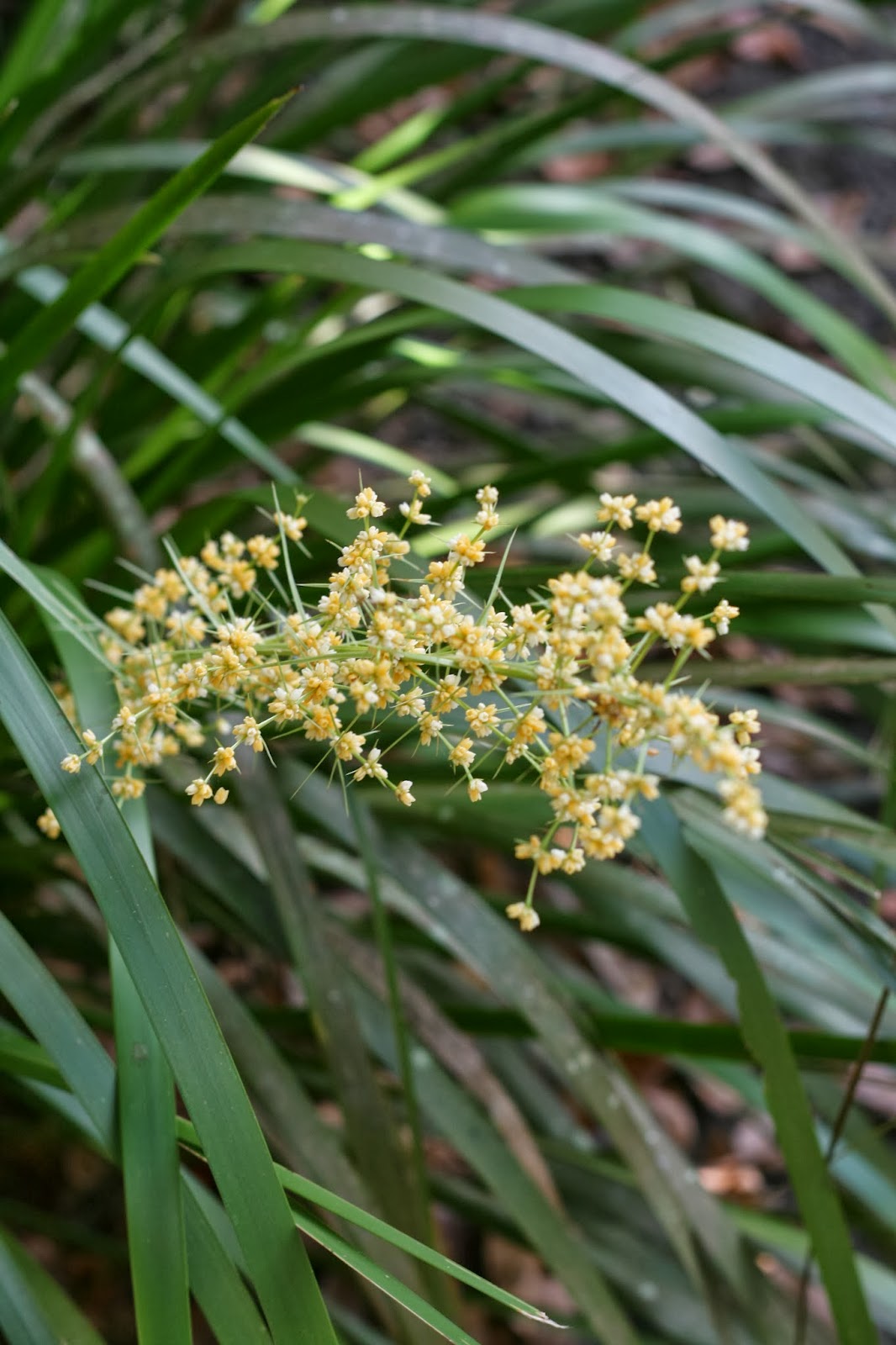The sugar cane was being harvested, and there were trains everywhere hauling the cane to be processed.
This next part took us by surprise... We stopped for our morning tea and "bikky" (biscuit), and then boarded a boat for a croc watching cruise. Didn't know that was included. We saw several, and some of them were HUGE!
Pretty Daintree River...
Big. Very big.
A kingfisher! These make me happy. I saw them several times flashing blue by the side of the road as we drove around Daintree and Cape Trib.
Mangroves! Real, live mangroves!
Spot the baby croc?
More mangroves. It turns out there is no bridge across the Daintree River, so the boat trip was our way across. Our guide, George, took the van on the ferry and met us on the other side. Everything north of the Daintree is off the grid! No utilities, anything. It was awesome.
I really like this plant, Lomandra hystrix. It would be a great ornamental if I ever live somewhere tropical that actually has a real nursery...
I love the huge tree ferns... You expect a dinosaur to come snack on one...
Ants. The green ants are everywhere! They're cute. One of our guides told us that 60% of the animal biomass in this rainforest is composed of ants. Not sure if that's true, but if so, it's incredible!
The view of the Daintree River entering the sea.
B and I.
This is the name of this lookout, I took a photo, because I knew I'd never be able to remember it or pronounce it...
This lookout was the first place we saw the big fan palms (Licuala ramsayii), another very characteristic plant of the Cape Tribulation rainforest.
We stopped next at another part of this National Park, where we were lucky enough to see a cassowary.
This is our guide, George. He's an elder in his Aboriginal tribe, and his grandmother was born in this part of the forest. He told us such wonderful stories, and he knew absolutely everything about every plant and how to use them, so, you know, I really liked him...
This is another plant I would like to have in my garden, Bowenia spectabilis. The seeds of this plant were eaten by the Aboriginal people, but, like most of the other things they ate, it's poisonous! So they ground it, roasted it, soaked it in running water for many days in net bags woven from pandanus, then dried it to make it safe to eat. B and I quickly realized that we would starve to death or die of poisoning if we had to live as Aborigines in the old days...
Another Boyd's forest dragon...
Aren't they cute?
The path George took us on here was a boardwalk up through the rainforest. It was so beautiful...
These things are about the size of chicken eggs, and are called cassowary plums. They cannot germinate near their parent tree, and are so big only the cassowary can eat them, so the species is entirely dependent upon the cassowary for survival, since being pooped out away from the tree is the only way they can germinate. And of course, the cassowary is extremely endangered.
Our night in Cape Trib we stayed at a different hostel called Ferntree. It was, uh, very different from our hostel in Cairns... In the middle of the woods, and dead quiet. No drinking, no nudity, no jelly wrestling, and no male strippers. We liked it... This is B and K walking to our room.
The hostel had a gorgeous pool surrounded by great plants.
These pictures, above and below, are of an elk horn fern (Platycerium hillii). This was one of my favorite plants. The brown papery things form a pot that catches humus for the fern to feed on.
This is a basket fern.
And more elk horns.
And fan palms, all around the pool.
We did some star gazing that night, and the milky way was the brightest I've ever seen it. So pretty. We also did a night time "bush walk" that was pretty dumb- wouldn't recommend it at all.



































No comments:
Post a Comment